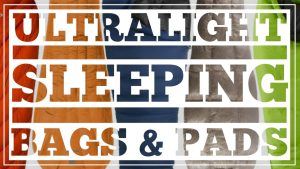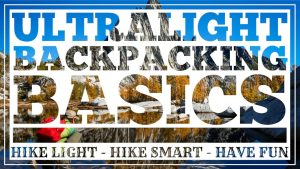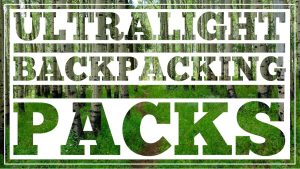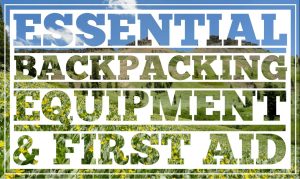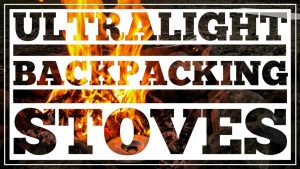Ultralight Tents, Tarps & Bivys – Episode 2
We independently test everything we recommend.
Buying through links on our site supports our work.
This is the second video in our Lightweight Backpacking Foundations video series – Ultralight Shelters. This series will help you learn how to backpack light and will cover a wide range of equipment options for ultralight backpacking. We also have a full Gear Guide on our site to help you find the best lightweight tools on the market.
For those of you that prefer to learn by reading, we’ve included episode notes as well as room for future updates and comments below. We hope you enjoy our content and we look forward to hearing your feedback!
Check out the Best Ultralight Tents list to see our favorite ultralight shelter picks.
Ultralight Backpacking Shelters
Your shelter will be one of the most important pieces of gear you bring on your backcountry trips for both safety and comfort. Shelters are also a great place to start saving weight in your pack. A traditional backpacking tent can easily weight 5-7 pounds. Traditional shelters are built for ease and comfort but often contain unnecessary extras.
With ultralight shelters, it’s possible to choose between many options to create a comfortable shelter that can easily weigh around one pound or less per person. Lightweight shelters generally reduce weight through design, simplicity, and high-tech waterproof materials.
When you’re choosing an ultralight shelter, make sure to know where your main priorities lie. Weight, Cost, Comfort, and Flexibility are all important shelter considerations. In this lesson we’ll take a look at some great one and two person shelter options that are good for spring, summer, and fall backpacking trips.
Freestanding Double Wall Tents
A freestanding tent is what most traditional backpackers are familiar with. Freestanding tents use pole structures to remain upright and they are usually very easy to assemble.
Most freestanding tents are also double-walled, meaning that they have a two protection barriers. They usually have a lightweight mesh layer that can be covered by a rainfly in wet conditions. This is a comfortable design that will allow for the option of sleeping without a rainfly on clear nights. Double wall freestanding tents are good in nasty weather and will keep the bugs out.
The main downsides to freestanding double wall tents are weight, cost, and size. “Freestanding” generally means that you’ll have a good amount of tent pole weight, and “double wall” means that you’ll have twice as much material. Both of those qualities will increase the weight of your shelter.
That said, there are still a few great ultralight options out there for lightweight double wall tents, but they do tend to be slightly heavier than other ultralight options.
Single Wall Tents
Single wall tents are a great option for backpackers looking to reduce weight without loosing all of the comforts of a tent. Single wall tents reduce the total amount of tent material by combining the mesh inner and the top rainfly layer to create hybrid of both.
They also reduce weight by minimizing the amount of metal that will be needed to keep them upright. Single wall tents generally utilize guy lines, stakes, and trekking poles to keep upright. If you’re not a trekking pole user, there will usually be an option to use lightweight tent poles with most single wall shelters.
Single wall tents are also fast and simple to set up. They will take a little more practice than the typical double wall shelter, but they shouldn’t be too difficult to set up once you get used to your model. Like freestanding tents, single wall tents are also a great option during bad weather and bugs.
One downside to single-walled tents is that in cold/rainy weather, condensation can form on the inside of your shelter. If you rub up against your tent, you might get a little damp from condensation. Increasing ventilation is key to reducing condensation in a single-wall shelter. This is generally not too much of a problem, but you should definitely be aware of it.
Lightweight backpackers that want a good blend between comfort, cost, and weight savings tend to like single-walled tents.
Tarps & Bivys
A tarp combined with a bivy bag is another very popular option among ultralight hikers.Tarp and bivy combinations can result in extremely light shelters and they can also be quite affordable. Some combinations will weigh ten ounces or less.
A bivy bag is a fully-enclosed, water resistant sack that’s a large enough sleeping space for a cozy nights rest. Your bivy bag will provide extra protection from wetness and bugs under your tarp during the night.
The combination of a tarp and bivy is a great option for hikers who are looking for a lot of flexibility from their shelter. Tarps can be pulled low the ground in nasty weather or can be left open for excellent ventilation and views. They also provide large protected spaces for groups in rainstorms. It will take time and practice to master setting up a tarp, but with a little effort you’ll quickly become a pro.
Backpackers who like to feel close to nature enjoy tarp and bivy camping because they won’t wall you off from your surroundings. The obvious downside is that it’ll be harder to get away from nature as well. Make sure to store your food properly and bring bug repellant if you plan on sleeping under a tarp.
Backpacking Hammocks
Ultralight hammocks are another shelter option that is similar to using a tarp and bivy. The hammock will provide a fully enclosed sleeping shelter and they’re usually paired with a tarp to provide rain protection.
People who like sleeping in hammocks absolutely love camping with them, so if that’s you’re style, you might want to give one a try. You won’t ever have to worry about sleeping on rocks and roots again.
That said, in order to backpack with a hammock as your shelter you’ll obviously need to find good trees to set one up, which can sometimes be tricky. Hammocks can also be a little chilly at night because your backside won’t be insulated.
Backpacking hammocks also tend to be slightly heavier than other ultralight options because they need to be strong enough to hold a lot of weight.
Still, if you love hammocks, you might really enjoy sleeping in one on the trail.
Hopefully that gives you a good base of information on lightweight backpacking shelters. If you’re interested in our favorite shelters, check out the shelters page of our gear guide.
Hike Light, Hike Smart, and Have Fun
POPULAR CLEVERHIKER CONTENT
- BEST BACKPACKING TENTS
- BEST LIGHTWEIGHT BACKPACKS
- BEST SLEEPING BAGS
- TOP GEAR PICKS
- 12 BEGINNER BACKPACKING BLUNDERS
- 5 REASONS TO DITCH YOUR HIKING BOOTS
- BEST BACKPACKING STOVES
- BEST SLEEPING PADS
- BEST HAMMOCKS
- 21 TIPS FOR THE FIRST TIME THRU-HIKER
- LIGHTWEIGHT GEAR TUTORIAL VIDEOS
- ESSENTIAL TRAIL SKILLS TUTORIAL VIDEOS
MORE EPISODES IN THIS SERIES
View all